Spice Up Your Life: The Ultimate Guide to Mexican Beef Stew (With Global Flair)
Welcome to a world where Global Spice Traditions meet the rich, hearty comfort of Mexican beef stew. Whether you're a culinary pro or a home cook with a growing spice rack, this guide is your passport to flavor town.
In this blog, we’ll explore everything from classic recipes to global twists, handy tips, and even some spicy science behind what makes these ingredients sing together. Buckle up — it’s about to get hot in here!
Table of Contents
- What Makes a Beef Stew “Mexican”?
- The Spice Lineup: Star Players in Mexican Beef Stew
- Secrets of Slow Cooking: Tender Meets Tasty
- Global Twists: Spice Fusion Ideas for Your Stew
- Pro Tips: How to Make It Like a Pro, Taste Like a Legend
- Common Mistakes & How to Avoid Them
- FAQs: Your Spicy Questions, Answered
- Conclusion
What Makes a Beef Stew “Mexican”?
When most people think of Mexican cuisine, tacos and burritos might come to mind first. But dig deeper, and you’ll find that stews like guiso de res or tinga de res are just as iconic — and often overlooked outside of Mexico.
So what defines a “Mexican” beef stew? It’s not just throwing in chili powder and calling it quits. Authenticity lies in the harmonious blend of spices and regional ingredients:
- Cumin
- Smoked paprika
- Dried chilies (ancho, guajillo, pasilla)
- Oregano (Mexican variety, if possible)
- Lime
- Garlic
- Tomatoes or tomato paste
These ingredients create the backbone of a flavorful, aromatic stew that sings of warmth, earthiness, and a little heat.
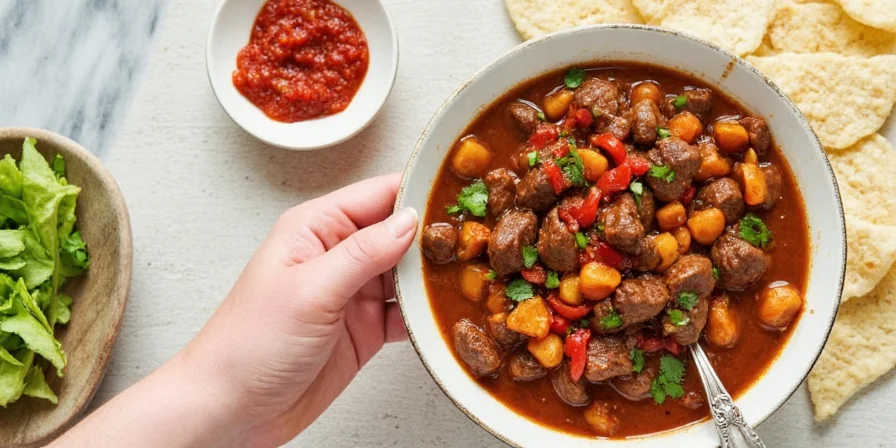
The Spice Lineup: Star Players in Mexican Beef Stew
Let’s dive into the spice cabinet and take a look at the key players. Each one brings something unique to the table:
| Spice/Ingredient | Flavor Profile | Best For |
|---|---|---|
| Cumin | Earthy, nutty, smoky | Adding depth and warmth |
| Smoked Paprika | Smoky, sweet, mild heat | Richness and color |
| Ancho Chili Powder | Sweet, fruity, mild heat | Balancing heat with sweetness |
| Guajillo Chili Powder | Tangy, berry-like, moderate heat | Complexity and bite |
| Mexican Oregano | Floral, citrusy, herbal | Fragrant finish |
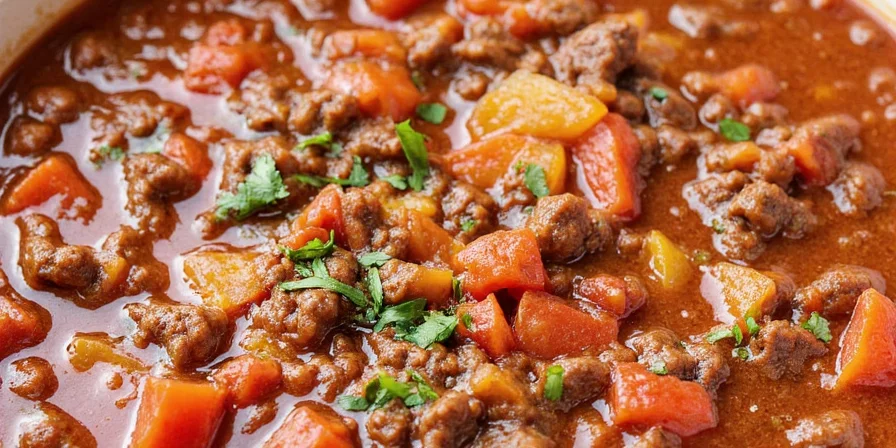
Secrets of Slow Cooking: Tender Meets Tasty
Beef stew is all about patience. The longer you let those spices mingle with the meat and broth, the more magical the flavors become. Here are some top techniques:
- Marinate overnight: Toss the beef chunks with spices and refrigerate overnight for deeper penetration.
- Brown the beef first: Adds caramelization and deep flavor notes through the Maillard reaction.
- Use bone-in cuts: Bones add richness and collagen for a silky texture.
- Cook low and slow: A crockpot or Dutch oven on simmer for 2–3 hours works wonders.
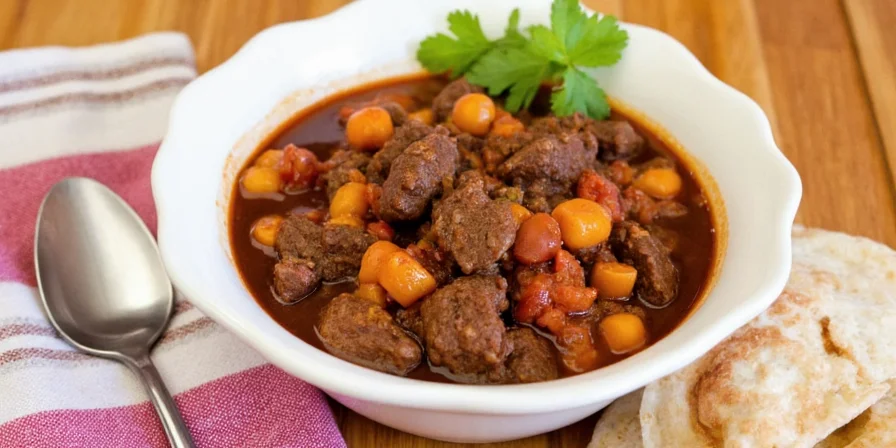
Global Twists: Spice Fusion Ideas for Your Stew
Since we’re exploring Global Spice Traditions, why not play with cross-cultural flair? Try these unexpected additions to give your stew a new personality:
- Indian Touch: Add garam masala and a pinch of turmeric for an earthy twist.
- Thai-Inspired: Stir in red curry paste and coconut milk for a creamy, spicy stew.
- Mediterranean Mix: Use za’atar and olives for a savory-salty kick.
- Korean Kick: Finish with gochujang and sesame oil for umami-rich vibes.
- African Twist: Add berbere spice and peanut butter for a hearty, complex base.
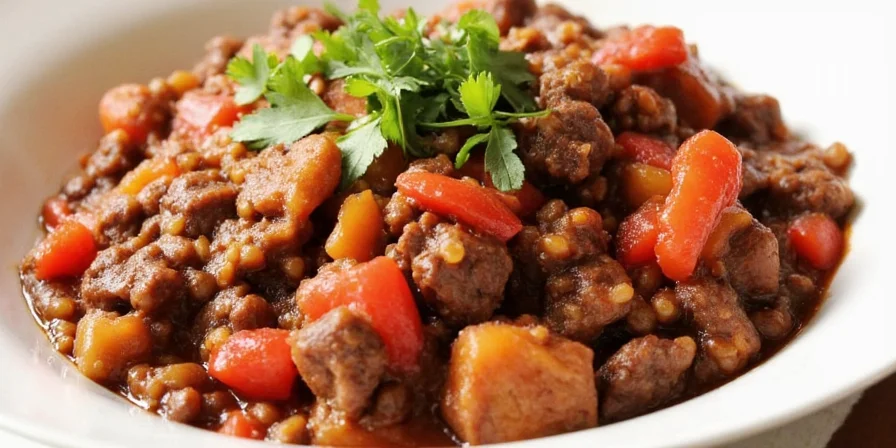
Pro Tips: How to Make It Like a Pro, Taste Like a Legend
You’ve got the recipe. You’ve got the spices. Now, let’s level up your game with these professional-grade hacks:
- Toast your spices first: Toasting cumin or chili powders in oil unlocks their full aroma.
- Add acid at the end: A squeeze of lime or splash of vinegar brightens up the whole dish.
- Balance heat with fat: A dollop of crema or avocado balances out spiciness.
- Layer your flavors: Cook aromatics first, then add dry spices before liquid for optimal flavor development.
- Rest the stew: Letting it sit overnight lets flavors meld beautifully.
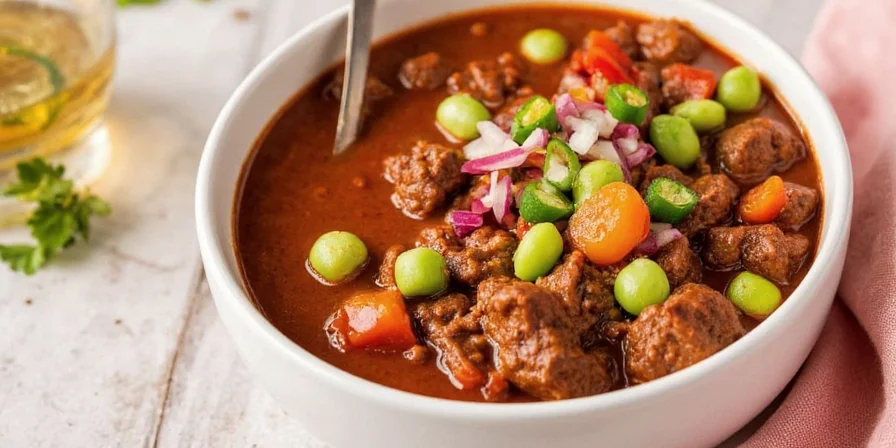
Common Mistakes & How to Avoid Them
Even seasoned cooks can slip up. Don’t fall into these common traps:
- Overloading with spices: Too much cumin or chili can overwhelm other flavors.
- Skipping the sear: That brown crust = big flavor. Don’t skip it!
- Using lean meat only: Lean cuts = dry stew. Go for marbled cuts like chuck or brisket.
- Boiling instead of simmering: Boiling = tough meat and broken-down veggies. Keep it gentle.
- Not tasting until the end: Adjust salt and spice levels as you go — don’t wait!
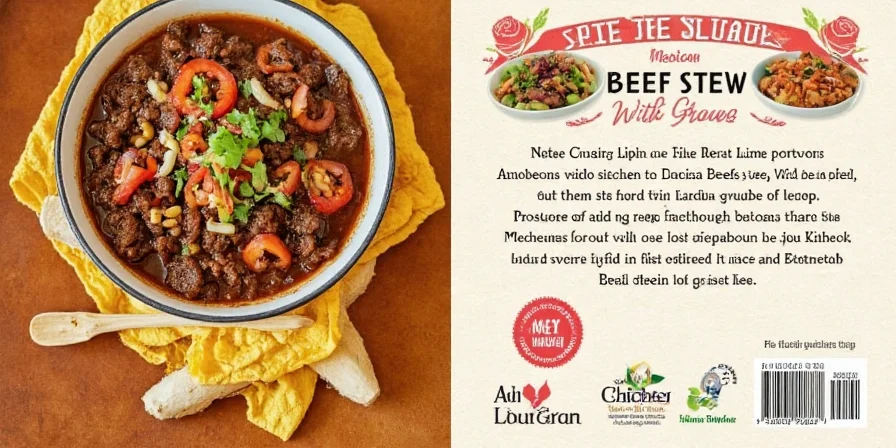
FAQs: Your Spicy Questions, Answered
Q: Can I make this stew vegetarian?
A: Absolutely! Swap beef for mushrooms, jackfruit, or chickpeas. Use vegetable broth and adjust spices accordingly.
Q: How long can I store leftover stew?
A: In an airtight container, it keeps well in the fridge for up to 4 days, or frozen for 3 months.
Q: Is there a quick version without slow cooking?
A: Yes! Use a pressure cooker or Instant Pot. Cook on high pressure for 30–35 minutes, then let naturally release.
Q: Can I use fresh chilies instead of dried?
A: Definitely! Jalapeños, poblanos, or serranos work great. Roast them first for more depth.
Q: What’s the best way to reheat stew?
A: On the stove over medium-low heat, stirring occasionally. Add a splash of broth or water to loosen it up.
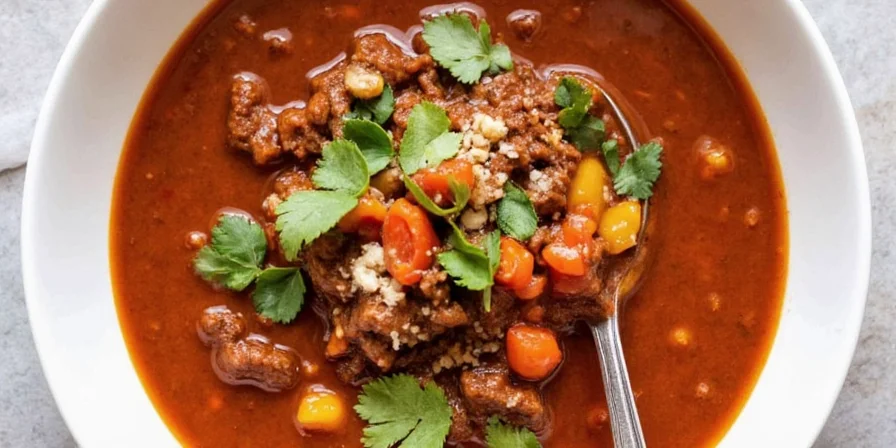
Conclusion
Mexican beef stew isn’t just comfort food — it’s a celebration of spice, tradition, and innovation. From the smoky warmth of cumin to the tangy bite of guajillo chilies, each ingredient plays its part in creating a symphony of flavor.
Whether you stick to the classics or venture into global fusion territory, the secret is always in the balance — between heat and acidity, spice and subtlety, tradition and creativity.
Now grab your ladle, dust off that spice rack, and get ready to stir up something unforgettable. ¡Buen provecho!

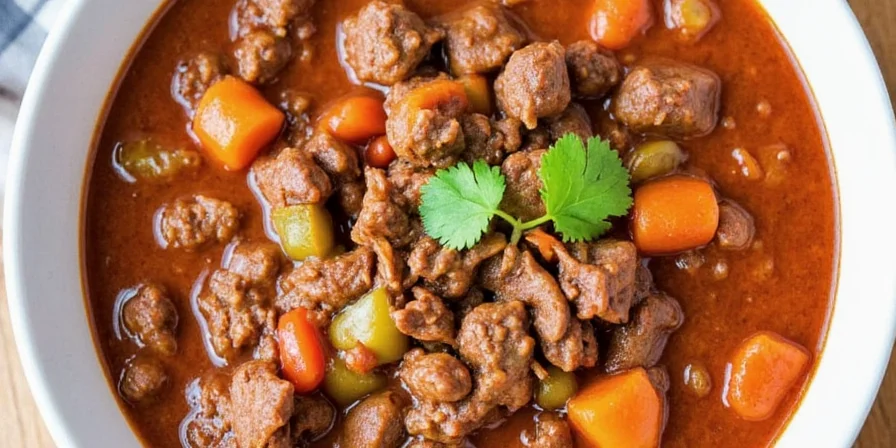









 浙公网安备
33010002000092号
浙公网安备
33010002000092号 浙B2-20120091-4
浙B2-20120091-4